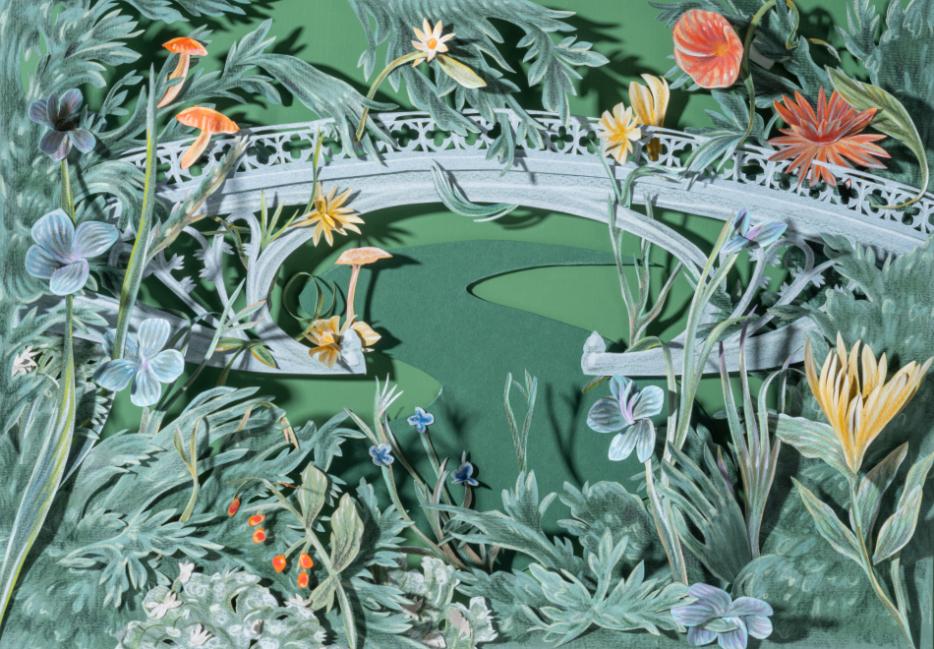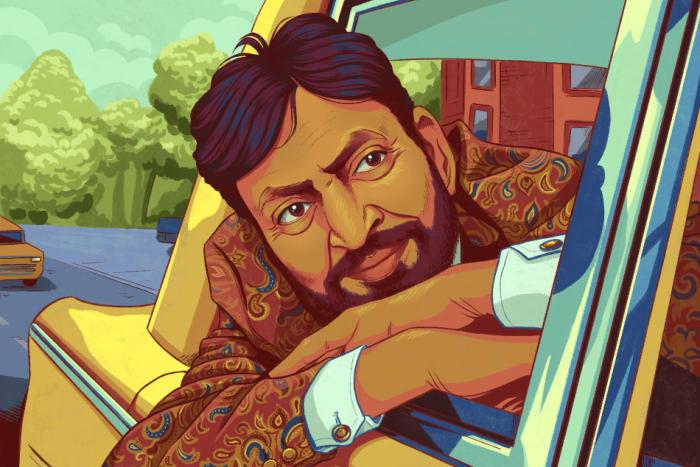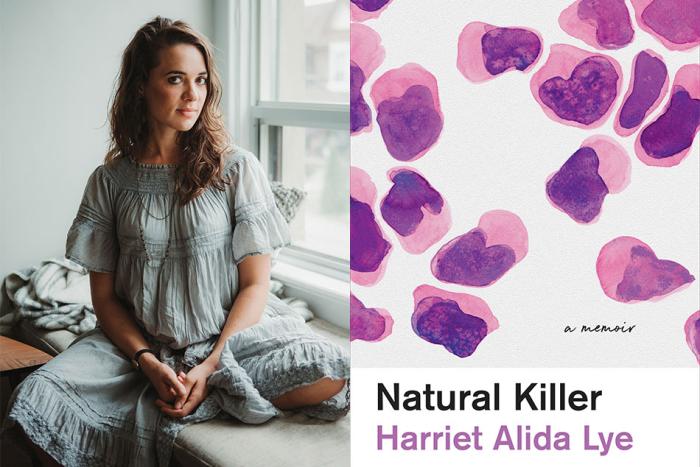When the coronavirus came to New York City, I began spending more time in Central Park. For much of 2020, it was one of the few places to escape the sound of sirens, safely unmask, and inhale the scent of a hyacinth rather than your own halitosis.
That patch of Manhattan, between 59th and 110th Streets and Fifth Avenue and the Avenue once known as Eighth (now Central Park West), has always felt sort of miraculous. The fact that you can be in the dizzying tumult of midtown one moment, and then suddenly lying in Kentucky bluegrass with your shoes and socks off, or gazing at a Great Egret gliding across a pond, is wondrously absurd.
18,000 trees. 843 acres. 2,373 squirrels, according to the last census. Its creators called it “the lungs of the city.” It’s also been described as a “synthetic Arcadian carpet grafted onto the grid” (Rem Koolhaas), an “Eden for everyone” (Cynthia S. Brenwall) and “#3 of 1,291 things to do in New York City” (TripAdvisor.com). During the Pandemic, the place has not only felt lovelier, but more necessary than ever.
I’ll also say what everyone’s been thinking: It was especially nice without the tourists.
When the pandemic hit, armed with a trusty foldable map, itself larger than many actual urban parks, I began treating Central Park as an actual destination. For the first time in eight years, I took a proper look at the carvings in the New Brunswick sandstone at Bethesda Terrace, the cast-iron filigree of the Ladies’ Pavilion, the mortarless cyclopean stones of Huddlestone Arch. I noticed the 500,000-year-old mounds of bedrock that punctuate the park, and admired the chalky-handed boulderers who have a different name for every climbing route (the Polish Traverse, Nipple Twist, Smack the Dragon).
When concert halls shuttered, I realized that the Park is the most exquisitely diverse live music venue in the city. On any given day, you might hear “Moon River” on ehru, or an aria from Carmen reverberating off the tile ceiling of the Bethesda Arcade, or some white dude playing “No Scrubs” on keyboard. I include the pitchy clanging of the Delacorte Clock’s seasonal playlist in this too. Plus, nearly everywhere you go, the sweet sound of sax. One saxophonist, calling himself Young Nomadic, told me in between songs that he aspired to create a suitable “soundtrack to paradise.”
I’ve become better acquainted with the Park’s wildly diverse array of sculptures, from the characters from Alice’s Adventures in Wonderland, polished by sixty years’ worth of clambering little palms, to King Jagiello, Grand Duke of Lithuania, looking like he’s about to gallop maniacally off his plinth straight into Turtle Pond. I must have perused every plaque inscription on every one of the Park’s 9,000 benches (a quote from Kung Fu Panda, on a bench in the Ramble, is a favorite) and, though I haven’t yet sampled from the Park’s veritable smorgasbord of foragable herbs, greens, nuts, berries and mushrooms, I still might.
All the while, I began to grasp the enormity of the work of the Central Park Conservancy, who plant tens of thousands of flowers a year, weed, hedge, prune, mow, till and irrigate, not to mention perform a terrific range of non-horticultural jobs, like maintaining the regulation pitching mounds in the North Meadow Ballfields, or stabilizing the Park’s 193-ton granite obelisk from ancient Egypt. During the pandemic, the essential work of caring for the Park simply carried on.
In an otherwise intensely confined and claustrophobic time, I especially appreciated the Ramble, the 36-acre simulacrum of an upstate forest, a kind of Disney World Adirondacks. It is the Park’s most eloquent riposte to urbanity: a place of nonlinearity, mystery, discovery. Sure, you can navigate with the help of street-referencing digits inscribed on the lampposts (whose luminaires, by the way, were redesigned in the 1980s to be “a kind of botanical event”). Or you can get pleasantly, wonderfully lost.
(Incidentally, the Disney analogy holds up, in the way that the transverse roads and operations buildings are “planted” out of view, and the way those strolling the Mall in the 19th century could also glimpse Belvedere Castle in the distance, made to look farther away with Disneyland-esque optical tricks.)
Most profoundly of all, I feel like I finally understood the Park as a designed work of participatory art and artifice, a scripted experience with the visitor as the protagonist. I became aware of the way, upon entering the Park, the visitor is often coaxed away from glass and steel to grass and sky with a shift in topography. Wander those meandering pedestrian pathways, and you realize the Park’s designers, working in 1858, were intentionally creating an enchanting kingdom of chlorophyll as an antidote to the stultifying rigidity of the Manhattan grid.
“If you come into Central Park in a rush or with any kind of citified agenda you’ll be eaten alive by the botany and the labyrinthine design,” tour guide Speed Levitch told me. “It’s as if the designers of the park are saying, ‘You're not getting out of here without convening with nature. You will convene!’”
*
It’s fitting that the fountain at the very heart of Central Park is a symbol of healing. Since 1873, the Angel of the Waters has stood on her fountain-top perch looking over Bethesda Terrace, beckoningly visible from the promenade of the Mall. From the positioning of her feet and the upsweep of her dress, it looks as if she has just landed there. Her arm is outstretched, her palm downward, a beneficent gesture that seems to say: “Chill out, my dudes.”
Originally, the Angel referred to the rejuvenating qualities of water conveyed to the city via the Croton Aqueduct. But it’s easy to see her as a more general representation of the Park and its soul-soothing powers. (Pigeon-repelling spikes on the Angel’s mighty wings undercut the beatific vibe a bit, but on the other hand: badass.)
Central Park’s designers, Frederick Law Olmsted and Calvert Vaux, envisioned the Park as a respite from the increasingly crowded city. Olmsted wrote, with a sometime journalist’s penchant for alliteration, on the need for relief from the “cramped, confined and controlling circumstances of the streets of the town,” promising a “specimen of God’s handiwork” for New Yorkers who couldn’t easily take a trip up north to actual nature.
Originally, the land did not look destined to become an idyllic pleasure ground. The Ramble was an unpromising pile of rocks. The Mall was quicksand. There were bone-boiling works for the recycling of animal carcasses on the west side, and even the pigs in the area, it was noted, were gaunt. “The stench,” Olmsted noted, “was sickening.”
For 15 years, a small army of workers wrestled with around 2.5 million cubic yards of stone and earth, laid down more than 40,000 cubic yards of fertilizer, and planted 270,000 trees and shrubs. The land’s rocky outcrops were sculpted into grassy knolls, and topographical depressions were transformed into tranquil lakes.
When you think of Central Park as an elaborate artifice, its outsize ambition starts to feel as egomaniacal as New York’s soaring skyline. No nature? No problem! We’ll make our own. The gently cascading waterfall in the Hallett Nature Sanctuary, to pick one example, emanates from a valve hidden among artfully placed rocks, having traveled through miles of buried pipes—and gets switched off, as unceremoniously and easily as a bathroom faucet, in the winter.
*
Long before 2020 turned it into a pandemic catch phrase, “We’re all in this together” was already the implicit message of Central Park. Olmsted wrote proudly of parkgoers’ “evident glee at the prospect of coming together, all classes largely represented, with a common purpose … each individual adding by his mere presence to the pleasure of all others, all helping to the greater happiness of each … poor and rich, young and old, Jew and Gentile.” Vaux fantasized about the Park not even having walls.
Unfortunately, there are walls, and the problems of the wider world, and America, don’t just stop politely at them. In 2020, in the Ramble, a white woman threatened to call the police on a Black birder after he asked her, as per Park rules, to leash her dog. It was an awful thing, made even more appalling because it occurred in Central Park, where today’s New Yorkers go to escape this kind of interpersonal friction.
Historically, incidents in the Park tend to be over-reported by the media. “It shocks people,” as a park police precinct captain explained more than half a century ago, “like crime in heaven.” But there’s plenty of darkness in the annals of Central Park’s history. Of course, the park is psychically linked with the Central Park Five case, the wrongful conviction of five Black and Latino teenagers from Harlem. Until very recently, a statue of Doctor J. Marion Sims—who performed gynecological exams on 12 enslaved women without anesthesia—stood on the Park’s perimeter. And, for all of Olmsted and Vaux’s democratic aspirations, the acquisition of land for Central Park involved the displacement of the people of Seneca Village, a community primarily made up of African American property owners.
The Central Park Conservancy has worked, with the Institute for the Exploration of Seneca Village History, to uncover and display the stories of these displaced people in that section of the Park. Doctor Sims is no more. (In 2020, #BlackLivesMatter protesters streamed past the now-empty spot.) Similarly, this January, the statue of Teddy Roosevelt on horseback, flanked by two nameless African and Native American men, was removed from outside the American Museum of Natural History, across from the Park.
These are welcome healing gestures, comforting in their symbolism. But the humane spirit of Central Park is on display year-round. You simply have to pay a visit on a pleasant day, and drink up the sight of New Yorkers enjoying literal common ground with other New Yorkers.
This is the real attraction of the place. The catch-and-release fishing, sailboat-racing and snowman-building; the basketballers shooting hoops, archers shooting arrows and dancers shooting TikTok content. Joggers circling the billion-gallon Reservoir, cyclists hurtling around the bike track CONVERSING VERY LOUDLY, Instagram influencers doing whatever it is they do. The birders, moving in flocks, in silent pursuit of the latest celebrity bird, and Beatles singalongs at the teardrop-shaped parcel of land called Strawberry Fields. (Let’s be thankful it’s a Beatle who gets a memorial in Central Park, and not, say, a member of Bachman Turner Overdrive.)
And all the parkgoers strolling the elm-lined cathedral nave of the Mall where parkgoers have strolled for 150 years, where youngsters once enjoyed goat-and-cart rides and where future generations will, I guess, zip along on hoverboards.
A lot of my knowledge of the Park was absorbed from the “parkies,” like Birding Bob, whose ornithological email updates I receive every couple of days; “Wild Man” Steve Brill, who was once arrested in the Park for eating a dandelion; and Janet Ruttenberg, who has been painting Sheep Meadow for twenty years with a paintbrush the size of a broom, drawn to that spot, she told me, by the “humanity.” On any given walk, I’ll be politely asked to take a photo, invited for a game of chess, or offered a free hamster (I declined).
So, sure, Central Park is an escape from the city. But, at its best, and even in the midst of a pandemic, it’s a thrilling and vibrant part of the city too. This was surely what E.B. White was getting at in Here is New York, in which he writes of the “magical occasion” of an evening on the Mall, lovers on a bench “swathed in music,” strollers and popsicles, breeze-ballooned skirts and bare shoulders.
Frankly, Matthew Perry puts it more succinctly in Fools Rush In. “Stay here long enough,” he says, “and the whole city walks by.”
Right now, crocuses and daffodils are emerging from the soil, turtles are clambering onto rocks to get some sun, and the Ramble is a veritable Grand Central Terminal of avian passers-through on the Atlantic Flyway. Before long, the first buds of the Yoshino cherries will blossom, the boats (and that one gondola) will venture back out onto the Lake, and thesps will be treading the boards of the Delacorte Theatre in the Shakespeare in the Park production of As You Like It (“tongues in trees, books in the running brooks, sermons in stones”).’’
Sitting in the shade of a tree planted 150 years ago, I’m reminded how the very existence of the Park was an act of generosity and optimism for the future. That the forward-looking New Yorkers conceived of it fundamentally as a gift to… well, us. When it seems that all is lost, I feel lucky to make the most of that gift, and grateful for a part of the city that does everything it can to remind you that life is beautiful, and will go on.
Unfortunately, the tourists are truly back now, but I guess you take the good with the bad.






